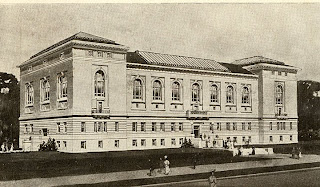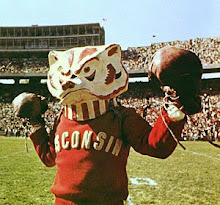 This Saturday, May 1st, is the much anticipated Mifflin Street Block party. Although students from all over come to party not many of them know the history behind this event.
This Saturday, May 1st, is the much anticipated Mifflin Street Block party. Although students from all over come to party not many of them know the history behind this event.

 This Saturday, May 1st, is the much anticipated Mifflin Street Block party. Although students from all over come to party not many of them know the history behind this event.
This Saturday, May 1st, is the much anticipated Mifflin Street Block party. Although students from all over come to party not many of them know the history behind this event.

 Alright all you Civil War enthusiasts , summer is just around the corner and its time to get ready for reenactments. Our collections have tons of Civil War materials but one in particular that I wanted to highlight is the Civil War Band Collection: 1st Brigade Band of Brodhead, Wisconsin.
Alright all you Civil War enthusiasts , summer is just around the corner and its time to get ready for reenactments. Our collections have tons of Civil War materials but one in particular that I wanted to highlight is the Civil War Band Collection: 1st Brigade Band of Brodhead, Wisconsin.

 This year marks the 100th anniversary of Lathrop Hall. In 1910 the building opened its doors as the Department of Physical Training for Women. According to University News, the original Lathrop Hall had a bowling alley, cafeteria, laundry, theater, three-story gymnasium with a running track, swimming pool, dressing rooms with lockers and showers, club rooms, social lounges, kitchens, reading rooms, home economics laboratories, classrooms and faculty offices.
This year marks the 100th anniversary of Lathrop Hall. In 1910 the building opened its doors as the Department of Physical Training for Women. According to University News, the original Lathrop Hall had a bowling alley, cafeteria, laundry, theater, three-story gymnasium with a running track, swimming pool, dressing rooms with lockers and showers, club rooms, social lounges, kitchens, reading rooms, home economics laboratories, classrooms and faculty offices.

 This Saturday, April 24th, is the 29th annual Crazylegs Classic Run! According to the Crazylegs Classic website, the race was thought up over a couple beers (how Wisconsin of them). The run raises money for the UW-Athletic department and was named after the then athletic director, Elroy "Crazylegs" Hirsch.
This Saturday, April 24th, is the 29th annual Crazylegs Classic Run! According to the Crazylegs Classic website, the race was thought up over a couple beers (how Wisconsin of them). The run raises money for the UW-Athletic department and was named after the then athletic director, Elroy "Crazylegs" Hirsch.

Spring on campus seems to be a great time to celebrate. This week, April 17-23, is All Campus Party. The Wisconsin Alumni Association (WAA) and the Wisconsin Alumni Student Board (WASB) along with student organizations, businesses and national corporations to sponsor All-Campus Party to celebrate the end of the school year, the onset of spring and the enthusiasm of the campus community.


Moorish architecture and decoration can be found in various regions in Spain. James Cavanah Murphy spent the last 12 years of his life preparing notes and drawings for a publication on this Moorish architecture. The resulting book, The Arabian Antiquities of Spain, was only partially published at his death in 1814.


GO BADGERS! It's time to get in the mood for football! This Saturday, April 17th, the Wisconsin Badgers will hold their Spring Game at 2p.m.

The Dane County Farmer's Market officially starts this Saturday, April 17th! The farmer's market on capital square has been a tradition since 1972.



Our Decorative Arts and Material Culture Collection has something for anyone who appreciates art. One Collection in particular, the Johann Hienrich Ramberg pictorial guide to drawing the human figure, is perfect for anyone who loves to draw or sketch.
 multiple views.
multiple views.

We recently went live with the Forest Products Lab Atlas Collection. The Forest Atlas of the National Forests of the United States was originally published in 1913. The forest distribution information was compiled from a vast number of published records, partly from numerous unprinted reports, notes, and the knowledge of individuals whose observations were still unrecorded.

University of Wisconsin Digital Collections. Original design by : Yanku-template | Sponsored by : Tutorial87 / Commentcute / Free Blogger Template